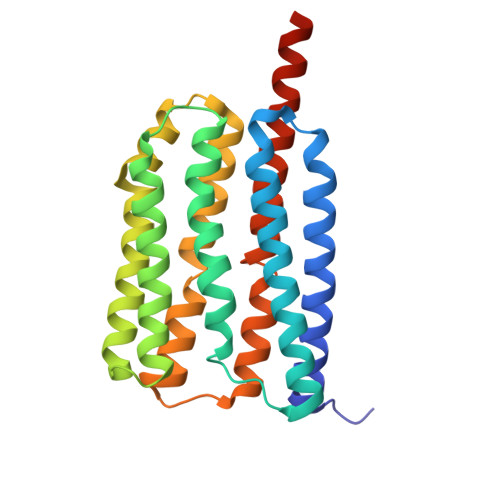Structural basis for no retinal binding in flotillin-associated rhodopsins.
Kovalev, K., Stetsenko, A., Trunk, F., Marin, E., Haro-Moreno, J.M., Lamm, G.H.U., Alekseev, A., Rodriguez-Valera, F., Schneider, T.R., Wachtveitl, J., Guskov, A.(2025) Structure
- PubMed: 40651474
- DOI: https://doi.org/10.1016/j.str.2025.06.006
- Primary Citation of Related Structures:
9R21, 9R22, 9R23 - PubMed Abstract:
Rhodopsins are light-sensitive membrane proteins capturing solar energy via a retinal cofactor covalently attached to a lysine residue. Several groups of rhodopsins lack the conserved lysine and showed no retinal binding. Recently, flotillin-associated rhodopsins (FArhodopsins or FARs) were identified and suggested to lack the retinal-binding pocket despite preserving the lysine residue in many members of the group. Here, we present cryoelectron microscopic (cryo-EM) structures of paralog FArhodopsin and proteorhodopsin from marine bacterium Pseudothioglobus, both forming pentamers similar to those of other microbial rhodopsins. We demonstrate no binding of retinal to the FArhodopsin despite preservation of the lysine residue and overall similarity of the protein fold and internal organization to those of the retinal-binding paralog. Mutational analysis confirmed that two amino acids, H84 and E120, prevent retinal binding within the FArhodopsin. Our work provides insights into the natural retinal loss in microbial rhodopsins and might contribute to the further understanding of FArhodopsins.
Organizational Affiliation:
European Molecular Biology Laboratory, 22607 Hamburg, Germany. Electronic address: kirill.kovalev@embl-hamburg.de.

















